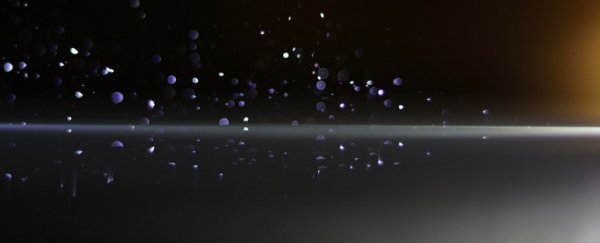What if microbes could drift through the vastness of space like pollen in the wind, planting the seeds of life on planets both far and wide? Is that how life started on our own planet? Is such a journey even possible?
New research from the astrobiology mission "Tanpopo", which means 'dandelion' in Japanese, suggests it very well could be.
Samples of a highly resistant bacterium genus called Deinococcus, which can be found high up in our atmosphere, has officially survived three years in the vacuum of space - withstanding microgravity, intense ultraviolet radiation and extreme temperatures whilst riding on the outside of the International Space Station.
The study adds a level of feasibility to the controversial panspermia theory, which posits that life did not originate on Earth, but arrived here from elsewhere in the Universe.
Of course, this would require cells to traverse immense distances under some of the most brutal conditions known to humankind, and there are some who remain skeptical that the theory is even possible.
Nevertheless, after three years stuck to the outside of the ISS, the dried Deinococcus pellets that were thicker than 0.5 mm, survived their laps around Earth. Those that were smaller, however, barely made it.
Judging by the level of decay shown on the samples, especially on the surface, researchers predict that a pellet a single millimetre thick could have survived up to eight years in outer space. At minimum, maybe three.
"The results suggest that radioresistant Deinococcus could survive during the travel from Earth to Mars and vice versa, which is several months or years in the shortest orbit," says biologist Akihiko Yamagishi from Tokyo University.
Previous research by the same team showed this was possible in the lab, but this is the first time bacteria has tested both inside and outside the ISS.
Other studies that have housed spores of Bacillus subtilis bacteria inside the ISS suggest some microscopic forms of life can last in space nearly six years. But with Deinococcus, the authors predict it could survive inside a spacecraft such as the ISS between 15 and 45 years.
DNA from 100 mm-thick pellets of D. radiodurans were heavily damaged by UV and UV irradiation appeared to have bleached on some of the outsides.
On the inside, however, the pellets retained their usual colour and a fraction of surviving cells.
"These results suggest a shielding effect provided by the surface layer of dead cells that sufficiently protected the cells underneath from UV," the authors write.
Many bacterial spores are incredibly durable and those like Bacillus subtilis can remain dormant for years on end. This is partly why they've been used to help prove the feasibility of panspermia.
If a clump of spores similar to the bacteria we've studied so far somehow found its way into space, distributed by space dust, asteroids, comets or meteorites, it could theoretically travel vast distances and survive entry into Earth's atmosphere.
Previous work has shown that bacteria can survive in space when shielded by a rock - a concept called lithopanspermia - but the new research suggests these spores might also survive by clumping together to build an "ark for interplanetary transfer" of life - a concept the authors have called "massapanspermia".
More research is needed before we can say for sure if panspermia is possible, either as a bacterial pellet or as a spore shielded by rock. But if bacteria really can survive in interplanetary space, Earth itself could act like a dandelion, blowing life out into the vastness of space, maybe even reaching Mars. Although it might have to hitch a ride with us.
The study was published in Frontiers in Microbiology.
